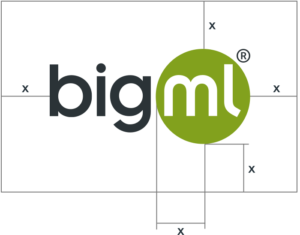BigML

The BigML: Simplifying Machine Learning for Everyone:
BigML is a cloud-based machine learning (ML) platform that offers a user-friendly, scalable, and accessible environment for building predictive models and performing advanced data analysis. Founded in 2011, BigML aims to democratize machine learning by making it more intuitive and available to a wide range of users, from data scientists and developers to business analysts and educators. With its comprehensive suite of tools, BigML empowers organizations to easily integrate machine learning into their workflows, helping them make data-driven decisions without the complexity often associated with traditional machine learning frameworks.
In this article, we will explore the key features of BigML, its advantages, and how it is making an impact across various industries.
Key Features of BigML:
-
User-Friendly Interface and Workflow:
- One of the defining features of BigML is its simplicity. The platform’s web-based interface is designed to be intuitive, with drag-and-drop capabilities that allow users to build and deploy machine learning models without needing to write code. This low-code approach makes it easier for non-experts to get started with machine learning while still offering enough depth for experienced data scientists to fine-tune models.
-
Comprehensive Machine Learning Algorithms:
- BigML provides a wide range of machine learning algorithms, covering both supervised and unsupervised learning techniques. These include classification, regression, clustering, anomaly detection, and time-series forecasting, among others. Users can choose from a variety of algorithms such as decision trees, random forests (called “ensembles” in BigML), logistic regression, and k-means clustering. The platform’s flexibility allows users to apply these algorithms to different types of data and use cases.
-
Automated Machine Learning (AutoML)
- BigML offers an AutoML feature that automates many of the steps involved in building and tuning machine learning models. With AutoML, users can automatically select the best algorithm, optimize hyperparameters, and even generate features, all while maintaining control over the process. This automation accelerates the model-building process and ensures that users get high-quality models with minimal effort, making machine learning more accessible to non-technical users.
-
Model Deployment and Real-Time Predictions:
- BigML simplifies the deployment of machine learning models, allowing users to integrate models into their applications or business processes seamlessly. Once a model is trained, it can be deployed with just a few clicks and used for real-time predictions via BigML’s REST API. This means businesses can easily embed predictive analytics into their systems, providing on-the-fly insights to improve decision-making and operational efficiency.
-
Interpretable Models:
- Interpretability is crucial in machine learning, especially in sectors such as healthcare and finance, where understanding how models make decisions is important. BigML provides tools for interpreting models, such as visualizations for decision trees and feature importance charts. These tools help users understand how their models are working, why certain predictions are made, and how to improve model performance, ensuring that the outcomes are transparent and actionable.
-
Time-Series Forecasting:
- For businesses that rely on future projections, BigML’s time-series forecasting capabilities are particularly valuable. This feature allows users to analyze historical data and make predictions about future trends, whether it’s forecasting sales, customer demand, or financial performance. BigML’s time-series models support multivariate inputs, making them highly flexible for a variety of forecasting tasks.
-
Clustering and Anomaly Detection:
- In addition to predictive modeling, BigML also offers tools for clustering and anomaly detection. Clustering algorithms, such as k-means, are useful for segmenting data into groups based on similarities, which can be applied in customer segmentation, market research, and more. Anomaly detection is useful for identifying outliers in data, which can help detect fraudulent activities or unusual patterns in large datasets.
-
Collaboration and Sharing:
- BigML encourages collaboration by allowing users to share datasets, models, and results with colleagues or stakeholders. The platform supports team-based collaboration, making it easy for users to work together on machine learning projects, whether they are in the same organization or spread across different teams. Sharing models is as simple as sending a link, allowing for real-time feedback and improved productivity.
-
Integrations and APIs:
- BigML’s extensive API support allows developers to integrate machine learning models into any application, website, or service. The platform’s REST API makes it easy to automate workflows, enabling organizations to build machine learning into their operational pipelines. BigML also offers integrations with popular platforms like Zapier, Google Sheets, and Tableau, which help users streamline their analytics processes and easily connect their machine learning models to other tools.
Advantages of BigML:
-
End-to-End Machine Learning Workflow:
- BigML offers an end-to-end machine learning pipeline, covering everything from data preparation and model training to deployment and monitoring. Users can import data, clean and prepare it, build models, and deploy them all within the same platform, reducing the complexity of switching between multiple tools. This integrated workflow accelerates time-to-insight and enhances productivity.
-
Cost-Effective:
- BigML’s pricing model is flexible, with options for both pay-as-you-go and subscription plans. This allows businesses of all sizes to access advanced machine learning tools without significant upfront costs. Organizations can choose a pricing plan that aligns with their needs, whether they are running small-scale experiments or deploying large models at scale.
-
Community and Education Resources:
- The community-driven support ensures that users can easily find help, whether through forums or direct interactions with BigML’s support team.
Industry Applications of BigML:

- Finance:
Financial institutions use BigML for risk assessment, fraud detection, and credit scoring. By analyzing transaction data and detecting anomalies, BigML helps banks and financial services firms identify potential risks and prevent fraudulent activities. Its predictive models also assist in making data-driven decisions about loans and investments. - Healthcare:
BigML is applied in healthcare for predicting patient outcomes, optimizing treatment plans, and detecting anomalies in medical records. The platform’s interpretability features are particularly valuable in healthcare, where understanding the reasoning behind predictions is crucial for ethical and accurate decision-making. - Manufacturing:
In the manufacturing sector, BigML is used for predictive maintenance, production optimization, and quality control. - Education:
Educational institutions use BigML to analyze student performance, predict dropout rates, and tailor learning experiences to individual needs. By using machine learning to identify at-risk students, educators can intervene early and improve student outcomes.
Conclusion:
By democratizing machine learning, BigML enables businesses to harness the power of AI, drive innovation, and make smarter, data-driven decisions.
